
FULLY MODULAR is the new “Fully Integrated and Complete System”

Digital Dental Impressions with Intra-Oral and Desktop Scanners


One of the most popular design techniques in digital dentistry is copying the pre-existing morphology of a restoration. When it is in occlusion and has desirable contours, you can image the pre-op condition before removing the crown.
Once the crown is removed, the preparation can be modified and new images can be taken. Placing margins is immediately followed by a great proposal that takes very little effort to finalize.

Our CAD-Ray software, powered by exocad and exoplan (pending 510k clearance) allows you to import your intra-oral scans and merge them with dcm files from ANY CT machine.
All CBCT machines can export the 3D x-rays into our software where you can merge the data with your intra-oral scans, design implants, and fabricate surgical stents for fully guided surgery. Here’s a preview of what’s coming up soon.

The Medit I500 is powered by a software called Meditlink. Within the program, you have workboxes where you can scan, design, nest, and mill a restoration, when you utilize the software as a laboratory, instead of a clinic. The feature is not available when you log in as a dentist, but all you have to do is register as a lab, and you have access to all these features.

You can can manage a case all within the meditlink software in a
seamless workflow. More importantly, you can utilize whatever CAD
software you want, nest and mill with your CAM software of choice, or
just export the case to someone else to collaborate with
In this video, you can see how you can launch the scanner and capture the data, then you can choose to utilize exocad, 3shape, Maestro design software. You can even export the data to another platform or launch your CAD of choice. Here, we utilize the CAD-Ray software which is a private label program powered by exocad.

The following pdf files document all the changes and updates to the Medit i500 intra-oral scanner. Some of the new features include taking pre-operative images, localized high definition scanning, a variable and custom scan depth field, scanning of impressions and much more

A well fitting surgical stent makes guided surgery very easy. You can CT scan a stone model or an impression to get a digital model to design the surgical stent
Download the DCM Files
Download the STL Files
Design Along by download the stl and dcm files


This failing three unit fixed partial denture was replaced with the Medit i500 and the CAD-Ray Design Software. While the patient was getting numb, a physical quadrant impression was made to fabricate a temporary after the removal of the existing bridge
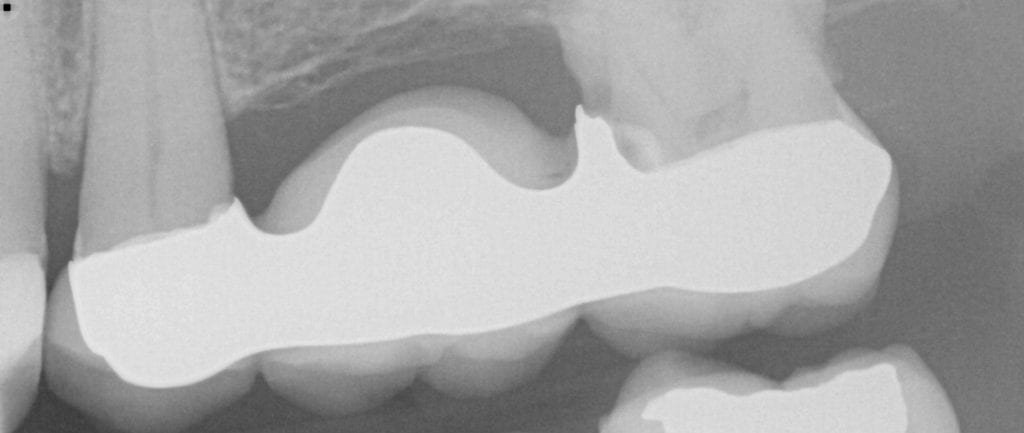
With distal extension case, we advocate that you take a the pre-op scans, the maxillan and mandibular scans, and the first of the buccal bites. After the preparations are done and imaged, we advocate that you take the second bite IN THE SAME area so that you can judge if the jaw has settled once your distal stops were prepared.
This preview shows how the two bites can aid with aligning the arches accurately and to determine if the jaw settled after the lateral pterygoid muscles releases.
For the sequence of events, you can see how the pre-op scan of the bridge was taken. The same model was then trimmed in the maxillar folder, the lower arch was scanned and the first buccal bite was taken.
After the bridge was removed, the premolar preparation was modified and the margins were exposed with expasyl and cord retraction. The premolar prep was imaged with the medit i500 and the pontic area was also captured
Proper isolation and retraction greatly contribute to ease of access and imaging. Here you can see how the isolite and the optragate are used in conjunction to control the clinical environment
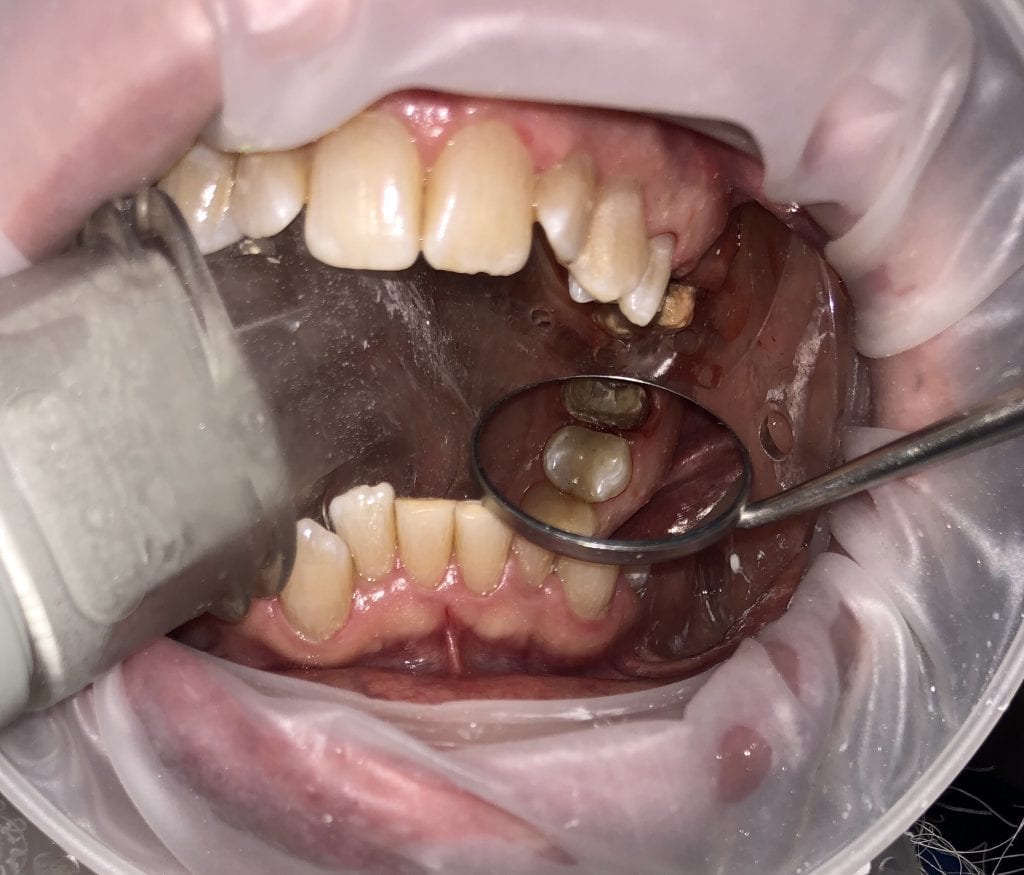
Notice how the red soft tissue is harder to pick up in the scan and the camera mode was changed to white light, as opposed to blue light scanning. Blue light is great at picking up tooth structure, white light is great at picking up red- blood and soft tissue.
Once the premolar area was captured, the imaging was stopped and then the molar crown prep was modified and the model was extended to include the new prepration. The difficult access was address by breaking up the model into sections that are much easier to maintain. The protect mode was used to not “ruin a good impression” elsewhere on the preparation
After the case was processed, the margins were marked and the rough design was proposed and then shared with the lab through the dentalshare network



A common question we get about the Medit i500 is about its cross arch accuracy. There are dozens of ways one can introduce errors with digital impressions and the user must be able to recognize the potential pitfalls. Once you adhere to strict scanning protocols, you can achieve very accurate scans.
To demonstrate the accuracy of intra-oral scanning vs physical impressions, we place 6 DESS Desktop Scanning Scanbodies (REF: 5041) on a stone model that contained six implant analogs.

The original impressions were taken using traditional impression abutments on BioMax Implants from BlueSkyBio Narrow Platform Fixtures. The surgical stent was used to capture the impression duralay pattern resin was used to secure the relationship of the impression abutments to each other and the tray.
The model was poured and a stone cast with analogs were fabricated. The stone models were desktop scanned with the Medit T500 and the rendered models were exported to exocad software to analyze the precision of the intra-oral scan with the traditional method.



At CAD-Ray, we have a tough job balancing the interests of patients, dentists, and labs. The hand-off or delegation from dentist to the lab in a digital workflow is difficult to identify because of various habits all parties are accustomed to.
We think the sweet spot is for the dentist to mark the margins, verify that the case is mounted corrected for the proper vertical dimension, and then submit the case to the lab. A great tool is the DentalShare feature from exocad that allows collaboration between dentists and labs.
This eliminates so many obstacles, reduces cost for labs dramatically, and expedites the fabrication of the restorations. There are no phone calls that need to be made and it allows collaboration at the highest level where you can pass files and images back and forth to your technician at your and their convenience.
With the products we distribute and the number of clients we have managed over the years, we identify this segment of digital dentistry as the largest growth potential in our profession.




Click here to download the DESS library for exocad. It gets tricky making sure you have the right parts for both the scanbody identification and the tibases that would go with the zirconia substructures you will be ordering and/or manufacturing.
DESS-Library-Installation-INS-12-MUL-02-2
There are some great new features coming to Version 2.0 by the Medit i500. We now have the option to image the pre-operative condition, the upper and lower jaws, and the buccal bite, along with the catalog boxes for scan bodies.
In this particular case, we are restoring a left Central Incisor that has been temporized for approximately 4 months
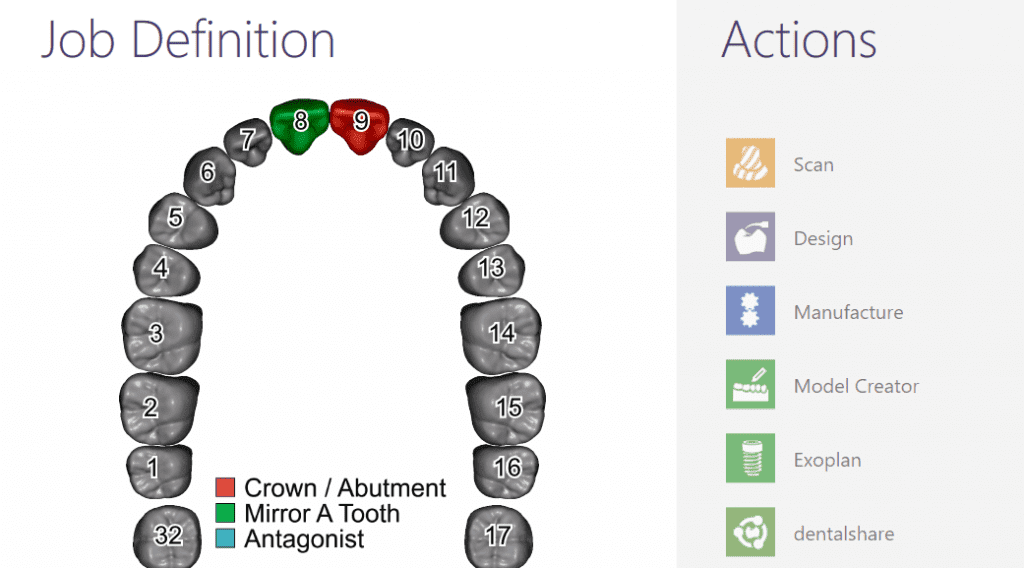
To set up the case, the pre-op arch was imaged, then the mandible was scanned, and the buccal bite was taken. After the occlusal relationship was registered, we moved back to the maxillary catalog box.

The screw retained temporary was removed and the contact areas and the gingiva was captured with the Medit i500. Then we moved to the scanbody catalog box, inserted a NT-Trading scan body, made sure it was completely seated and imaged that as well.
Once the case is processed, the relationship of the upper jaw to the lower jaw is preserved, as is the relationship of the pre-op condition to the maxilla as well as the scanbody relationship to the same arch. This is critical when you bring it into design software as the steps to relate the jaws to each other is dramatically reduced

A cool new feature in the upcoming Medit i500 is the opportunity to capture deep areas that are out of the camera’s focal length (-1.5 to 17mm). This usually happens in complex implant cases, or in this case where the anterior four teeth were traumatized.
With very little tooth structure remaining, a custom post and core was required to restored the dentition with a very guarded prognosis. After root canal therapy, the chamber was accessed and a conventional impression was taken.
Separate from this, a clinical digital impression was taken of the temporaries, the opposing and the buccal bite. The margins of the preps were protected and the chamber was deleted / cropped. As you can see, there are hollow areas in the depth of the chambers where the topography was outside the focal length. Scanning the impression as a negative gives easy access to the depths of the chamber, allowing you to form a model that is well outside the imagine range of the neighboring teeth.
The software allows you to image intra-orally and then allows you to fill in the voids by imaging the impression instead.
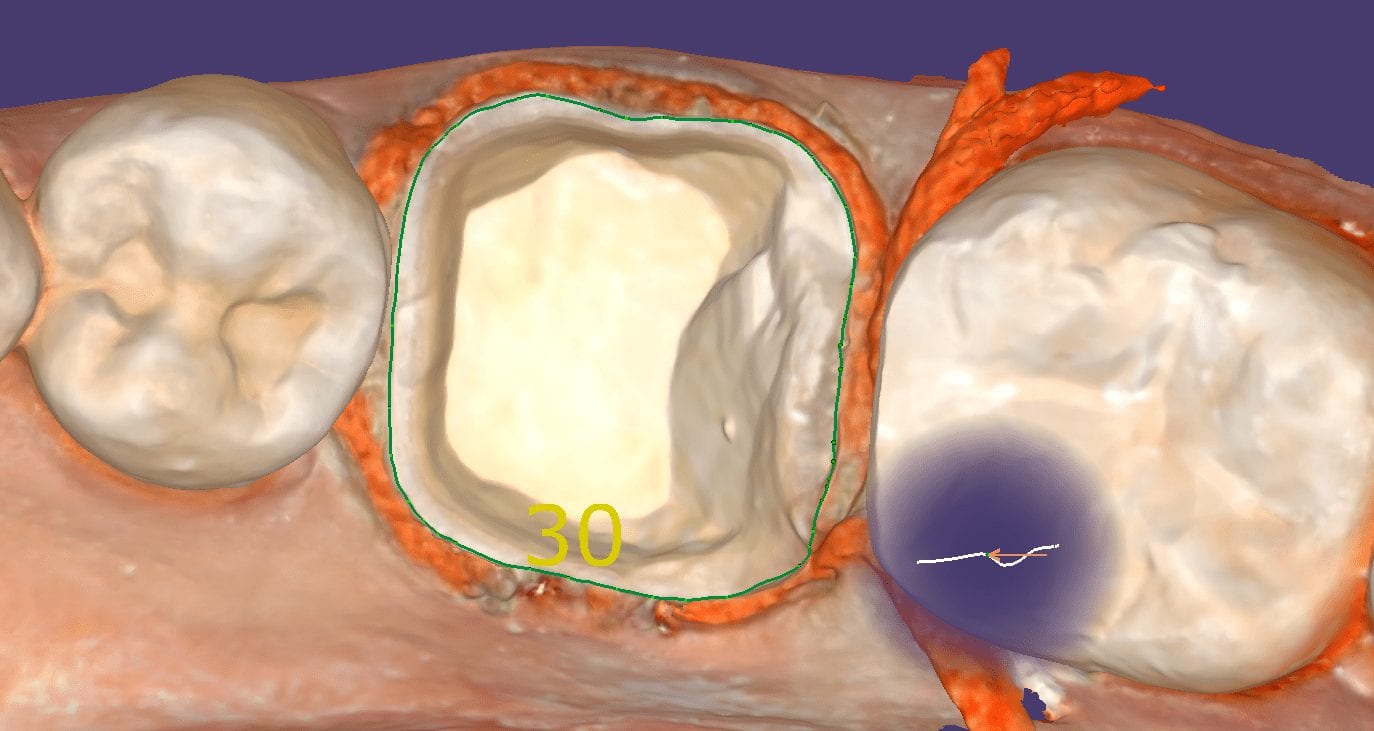
A new feature coming soon to Medit I500 is localized High Definition Scanning. There are two modes you can scan and save the models in; Normal and High Definition. In previous versions, either the whole arch model was process in regular or HD mode. Although of little clinical significance, if any, the visual properties provided by the High Definition mode resonate with all clinicians.
The processing times for HD mode was 4-5 times longer than regular mode. Now, you an just scan local areas in High Definition, greatly reducing processing time and provided you sharp details of the preparation.
In this video you can see clinically how the upper arch was imaged in regular mode. The whole lower arch was then imaged while expasyl was applied as a hemostatic agent. Once bleeding stopped, the area was irrigated and dried. In the software, the molar area was trimmed away and the local HD feature was turned on. The topography of the preparation was captured in the new Local HD mode.
As a clinician, you will appreciate the depth of the margin and the quality of the scan when designing the restoration in exocad
[videopress jxz9c27l]
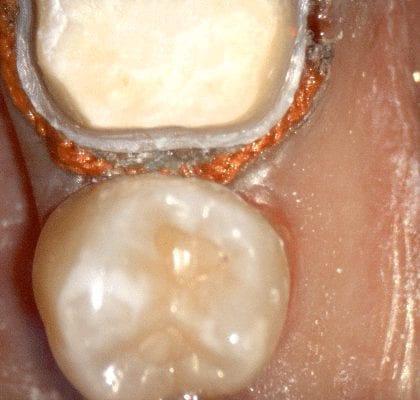


Here, you can see the design process in our software powered by exocad.
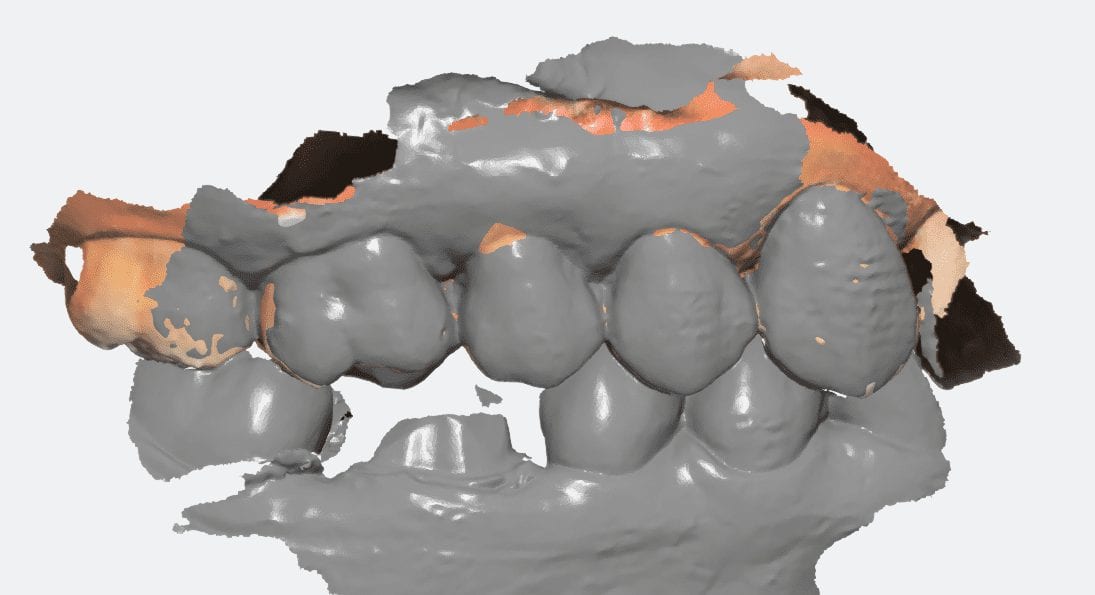
A very common issue for a new user of Intra-Oral Scanners is to appreciate that, generally, the cameras nor the software, can tell the difference between tooth structure and soft tissue.
Furthermore, once soft or hard tissue is captured by a scanner, it assumes that the data is part of the model and part of the “equation”. What this means for automation is that this data, if you don’t take it into consideration, can actually hinder the automatic stitching of arches to each other via the buccal bite.
In the attached video, you can see how some excess data in the lower arch, namely the cheek, prevented the automatic stitching of the buccal bite with the upper and lower arches. Simply trimming away data sets that are in the line of sight for your camera can greatly speed up the process.


In the original version 1.0 of Medit Software, you would capture the upper jaw and lower jaw, then the buccal bite on either one side or both sides. Once you capture the arches and their occlusal relationships, you then process the case.
In the preview box, you will then find two models that you can export. The mandibular and maxillary files are readily visible, but the buccal bite, or the occlusion models are not present. This can be confusing to some new users or people used to other programs / software. Rest assured that when you import the case into another software, the relationship of the upper arch is maintained with the lower arch.

The above case is imported into another software and you can see how it automatically relates the arches to each other as there embedded coordinates in the two arches and they know their positions on the X,Y,Z planes
Now imagine if you actually wanted or needed the buccal bite models too. Once thing you could do is to start a new case, and take the right side buccal bite in one of the catalogs, and the left side buccal bite in the opposing arch catalog box.
You could then export both of those models to third party software to utilize them for their intended uses. In this video, you can see how this is managed- all you have to do is label them properly when exporting them because the software will label them as maxillary and mandibular files.
In the new software version 2.0, the buccal bite models can be exported along with the upper and lower arches. So can the preop models or wax ups if you wanted to utilize them in a particular design

Advanced users will like this feature as they can manipulate the models with the two bite models. For example, in the video attached, there are 4 models being utilized to establish the current bite. You can bring multiple other models to set the arches at differing vertical dimensions and tooth positions for more complex cases.

A couple of great new features are coming to Medit V2.0 really soon. One is the ability to capture the pre-existing situation in one catalog box and the prepped arch in the other.
In this video you can see how the initial maxilla is captured in the first catalog box. Once that is done, the appropriate arch is selected and the model appears in the respective arch. You simple crop out the area where the preparation belongs and start imaging to fill in the space with the prepped arch.
The great part of this program is that the imaging of the preparation does not start until the software recognizes the adjacent landmarks. It is imperative that the same “stitching abutments” exist in both models. As a bonus, you can click on localized HD mode for the preparation where the detail is captured in high-resolution.
When you capture both the pre-op and the preparation model in this manner, it is an easy workflow in the CAD software to render the restoration. Since the models are related to each other, you can command the program to adapt the restoration to the teeth (or pre-op condition). For best results, you must trim the pre-existing condition in manner so that the only remaining area is above the margin circumferentially.
To achieve that, simple trim the pre-existing condition with the edit tool in the software. If the pre-op is in great condition, you will not have to do any adjustments. One over-riding feature that always prevails is the minimum thickness around the margins.
With the localized High Resolution mode in Medit v2.0 you can speed up processing time but not compromise resolution that allows for great fitting restorations, as you can see in the try-in step of this emax 3/4 crown

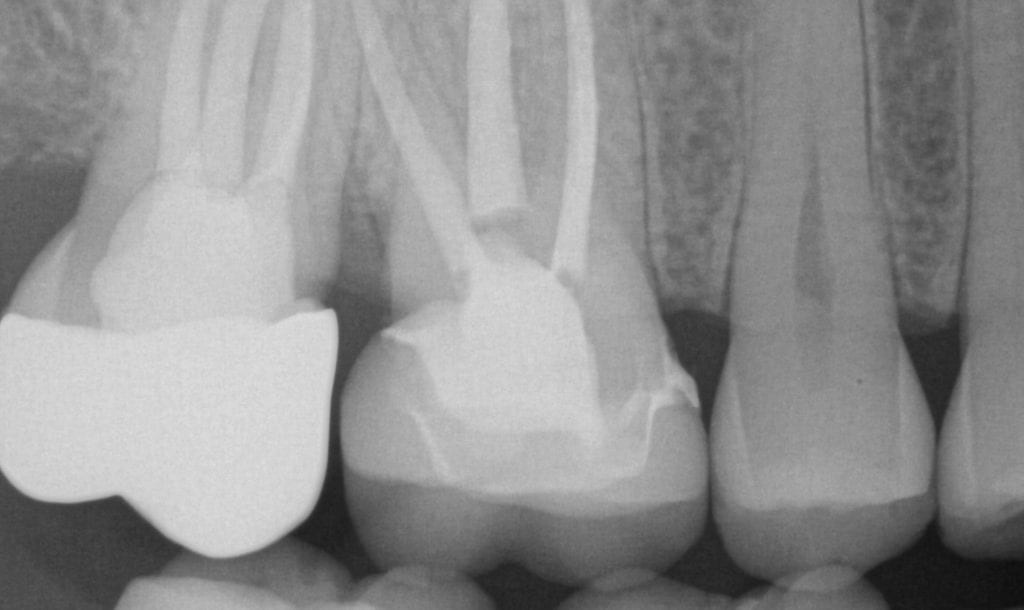
With digital dentistry, you can approach complex cases with ease. For example, when you look at these two crowns that need to be replaced, your inclination is to prep them both, get hemostasis and retraction at the same time, and then take the impression.
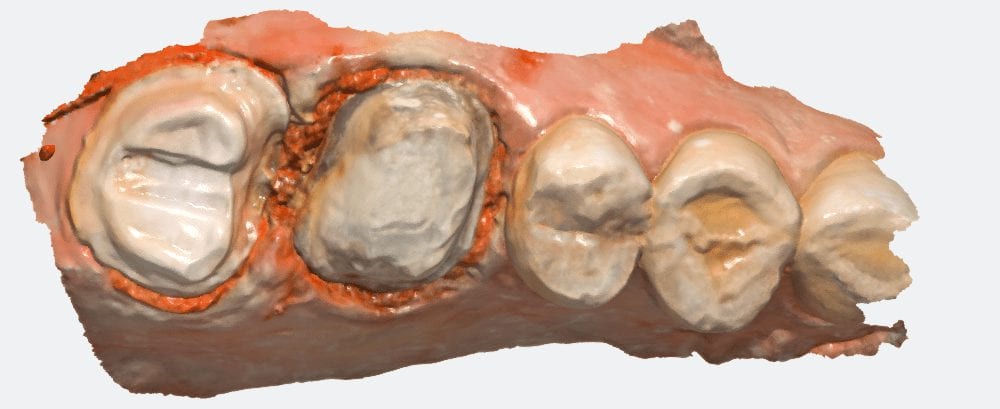




We have the milling solution for you!
Whether you only image with your 3Shape scanner or design within Design Studio, you can export the stl file into our milling machine’s native CAM software and start producing restorations in your office.
If you don’t have a computer aided design software, we can package our milling machine with our privately labeled CAD-Ray Software (exocad) and you design crowns, inlays/onlays, partial crowns, custom abutments and a lot more! If you already have the design software, all you have to do is export it and take the VHF milling machine
Both the N4 and the Z4 can nest your restoration and mill your desired product.
POPULAR PRODUCTS





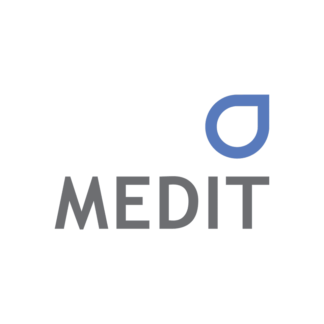



This recent publication in the Journal or the American Heart Association details the relationship between sleep apnea and cardiovascular disease. It is a comprehensive study evaluating the success rate of possible treatment modalities, including oral appliance therapy.



A recent study published in the Journal of Advanced Prosthodotics compared many Intra-oral scanners and used the Medit desktop scanner as the reference frame and benchmark for accuracy. Unfortunately the Medit Intra-Oral Scanner was not commercially available at the time of the study.
Our position at CAD-Ray is that any scanner can be accurate and inaccurate based on how it is utilized. Furthermore, once you capture accurate data, by the time you design a restoration and send it to production, the printing or milling machine has no idea where the scan came from and generally can produce restorations to the level of accuracy the resolution the scanners provide.
Keep in mind, there are dozens of ways an operator can introduce errors in imaging.
You must be logged in to post a comment.